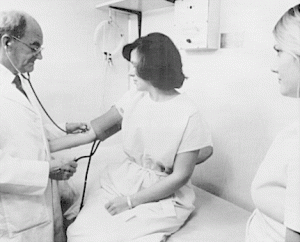 This month marks the 41st anniversary of Roe v. Wade, the pivotal case where the United States Supreme Court legalized abortion. Many see this decision as both a political and religious issue, while others view this as the right for women to make private medical decisions without the interference of politics. Regardless of how you view abortion, it’s important to recognize the evolution of women’s health in America to see how far we’ve come in this field.
This month marks the 41st anniversary of Roe v. Wade, the pivotal case where the United States Supreme Court legalized abortion. Many see this decision as both a political and religious issue, while others view this as the right for women to make private medical decisions without the interference of politics. Regardless of how you view abortion, it’s important to recognize the evolution of women’s health in America to see how far we’ve come in this field.
Here is a brief timeline outlining notable events in women’s health in the United States.
1800: This year, every American woman had an average of seven children over her lifespan. The birthrate reached an all-time high of 55 births per thousand residents—today the rate is 13 births per thousand.
1849: Elizabeth Blackwell ranked first in her class at New York’s Geneva Medical College, making her our country’s first female doctor. Battling sexism and prejudice, Blackwell founded a small clinic that eventually grew into the New York Infirmary for Women and Children and even opened the Women’s Medical College in 1868 to train more female physicians.
1896: The first commercial menstrual care product in America came on the market from a “little known” company called Johnson & Johnson. Unfortunately, this model was a commercial failure and it wasn't until 1921, with the invention of Kotex, that menstrual care products found their market success.
1916: Margaret Sanger opened America’s first birth control clinic in Brooklyn, New York. Later, in 1921, she founded the American Birth Control League, which was eventually called Planned Parenthood.
1931: Robert Tilden Frank, a New York gynecologist, became the first researcher to give medical credence to premenstrual syndrome.
1960: The FDA approved the sale of the birth control pill, the first oral contraceptive manufactured by Searle.
1969: The low-radiation mammogram was invented, minimizing the risk of high doses of radiation on earlier models.
1970: The publishing of Our Bodies, Ourselves revolutionized views about the female body and sexuality. It is a book written by women, for women, and has sold more than 4 million copies since its publication.
1973: Roe v. Wade decision made by the United States Supreme Court.
2006: The FDA approved the emergency contraceptive pill Plan B for prescription use. It is now sold over-the-counter for women 18 and older.
2007: Dr. Teresa Woodruff edits the first book on oncofertility, a new field that studies how to preserve fertility in patients whose fertility has been compromised due to cancer treatment.
Of course we know that women's health extends well beyond these notable triumphs, and we're looking forward to a future where innovative advances in women's health continue to become more frequent and groundbreaking.
Source: Everyday Health
